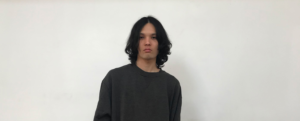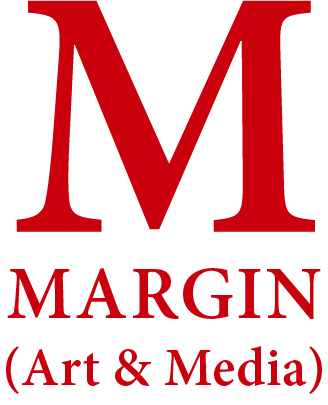
Singapore, 25/2/2022
Please introduce yourself to our audience.
My name is Mamoru Watanabe, and I was born in Tokyo, Japan. I currently live in London, UK. Here, I work independently and collaboratively with other artists. I recently founded an R&D platform named FEAMR to explore the connection between practice-based art, music, and media research in a social context.
渡辺護です。1992年東京都生まれで、現在はロンドンを拠点に活動しています。
作品の制作活動と並行して、最近、FEAMRという芸術、音楽、メディア領域にフォーカスした研究開発のプラットフォームを設立しました。
What is the philosophy of your art?
I’ve always been interested in human perception. In particular, the influence of media technology on human perception. Art, for me, is the way I explore the questions that arise from exploring such interests. I usually make, reflect, and engage in various forms of expression.
I’m currently interested in how we form ‘images’ in our minds. For the past two years, I’ve been exploring this topic by making music videos. As I listen to specific sounds, I aim to capture the images that come to my mind. I then try to fix shapes and colours to those images. I’m interested in the mechanisms of this process, and I’m interested in creating a space where others could experience this too.
僕は、常に人間の知覚とメディアテクノロジーに興味がありました。
これらの興味を探求していくと新しい疑問が常に生まれてくるのですが、自分にとってのアートは、そういった疑問を実践を通して解明して行く方法のひとつになっています。
ここ最近は「イメージ」というものが意識の中で、どのように形成されているのかに関心があり、そこから派生して、去年までの2年間は、ミュージックビデオの制作をメインに行っていました。その制作過程では、僕が音楽を聴いた際に頭の中に生まれてくるイメージ、ある種の共感覚的な体験に基づいて、自身の主観的なイメージに、形や色を定着させるという事を意識してきました。
しかし、それ自体はかなり閉鎖的な行為で、いまはそれらをどのようにして開いていくかという事に興味があります。
What sort of an artist would you say you are?
‘Versatile’ would be the most fitting word to describe my work as an artist. I usually create works based on my interests and physical sensations, but I don’t tend to be particular about the format or output. Even though I create works that use computers because of my interest in media technology, the core interests and ideas are the same as when I create physical sculptures and installations.
This time, I created an NFT work because I’m interested in exploring this new form of application. At the same time, I’m aware of NFTs environmental concerns, especially CO2 emissions caused by cryptocurrencies such as Ethereum. For this reason, I would like to explore the value of NFTs while considering those problems.
Even in this context, I would like to emphasize the physical and tangible rather than the digital and virtual. I believe this form of knowledge – that of physical experiences – can help us connect with the hidden realities.
「可変的」という言葉がアーティストとしての自分の制作を説明するのに最適な言葉な気がします。
僕は自身の興味関心と身体感覚を軸に、作品を作り上げていますが、アウトプットする形式には一切こだわっていません。
たまたま僕の興味関心が、メディアテクノロジーにある事で、コンピュータを用いた作品を制作する事が多いですが、たとえ物理的な作品を制作するにあたっても、その軸は一切変わりません。今回NFTの作品を制作しましたが、その背景にはNFTが持っている可能性を、実践を通じて理解したいという思いがあります。同時に、Ethereumを始めとした暗号通貨が引き起こすCo2排出量などの問題がある事も理解しており、それらを考察する事も含め、身体的な経験を通して、自分の中で全体像を掴んでいきたいという思いがあります。
そういう意味で、全ての作品は身体知へ還元する為に作られていると言っても良いかもしれません。
You took part in an exhibition in the Netherlands at Berg Church in Deventer in 2020. As a Japanese artist how was your work received by the European audience?
I came to set up my work, but I had to return to London just before the opening. So, I couldn’t get direct feedback from the audience.
作品の設置をした後、オープニングの前にはロンドンに戻らなければならなかったので、オーディエンスからのフィードバックを直接受ける事は、残念ながら出来ませんでした。そのため、オーディエンスにどのように受け取られたかは分かりません。
What are the main things about your art that distinguishes you from other International Asian artists.
Formats and styles are rapidly changing, so the distinction between these is variable. But if I answer this question, I’d say that each person has a different story, and each artist shows extracts of their reality. If the viewer senses that the story I show them is different from that of the artist next to me, I think there’s already a distinction.
自分が信じている物語が、隣のひとが信じている物語と全く異なるように、それぞれのひとが違う物語を持っています。それはたとえ国籍が同じでも変わらない事だと思います。
形式やスタイルなどは移り変わるもので、そこでの区別は可変的なものです。
僕はアートにおいて他者と比較するという事は無意味だと思っていますが、もし鑑賞者が自分の作品と他のアーティストの作品を並べて観た際に、それぞれが全く別の物語であると感じられたら、それが僕と他のアーティストとの違いであると思います。
